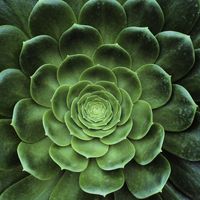Beginner Orchid Growing: Getting Started With Orchid Plants

Amy Draiss
Orchids have a reputation for being finicky, difficult plants, but many orchids are no harder to grow than your average houseplant. Start with an “easy” orchid, then learn the basics of growing orchids. You’ll be addicted to these fascinating plants in no time. Read on to learn about beginner orchid growing.
Orchid Growing for Beginners
Getting started with orchid plants means selecting the best plant for beginner orchid growing. Although there are many types of orchids, most pros agree that Phalaenopsis (moth orchid) performs well in the average home environment and is great for those just starting out.
A healthy orchid has a strong, erect stem with dark green, leathery leaves. Never buy an orchid that looks brown or wilted.
Basics of Growing Orchids
Light: The amount of light varies considerably, ranging from high, medium, or low light, depending on the type of orchid. Moth orchids, however, prefer low lighting, such as an east-facing or shaded window, or a spot where the plant receives morning sun and afternoon shade. You can also place the orchid under a fluorescent light.
Your plant will tell you if it’s getting too much (or too little) light. Leaves tend to become greener when light is too low, but they may turn yellow or bleached-looking when light is too bright. If you notice black or brown patches, the plant is likely sunburned and should be moved to an area with lower light.
Temperature and humidity: Like light, orchid temperature preferences range from low to high, depending on the type of orchid. Moth orchids, however, do well in normal room temperatures preferred by most houseplants.
Most orchids prefer humid environments. If your room is dry, place the orchid on a humidity tray to increase moisture in the air around the plant.
Sign up for the Gardening Know How newsletter today and receive a free copy of our e-book "How to Grow Delicious Tomatoes".
Water: Overwatering is the prime cause of orchid death, and orchid pros advise that if in doubt, don’t water until the top couple of inches (5 cm.) of potting mix feel dry to the touch. Water the orchid in the sink until the water runs through the drainage hole, then let it drain thoroughly.
Decrease watering when blooming stops, then resume a normal watering schedule when new leaves appear.
Fertilizing: Feed orchids once a month using a balanced, water-soluble fertilizer. Alternatively, use a fertilizer formulated specifically for orchids. Like watering, the application of fertilizer should be reduced when blooming stops and resumed with new growth appears.
Repotting: Repot orchids into fresh potting mix every couple of years. Use a potting mix formulated for orchids and avoid regular potting soil.

A Credentialed Garden Writer, Mary H. Dyer was with Gardening Know How in the very beginning, publishing articles as early as 2007.
- Amy DraissDigital Community Manager